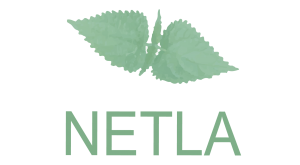Icelandic preschool staff attitudes towards language stimulation for children whose home language is other than Icelandic
DOI:
https://doi.org/10.24270/netla.2022.4Keywords:
multilingual children, preschool, language stimulation, Icelandic as a second languageAbstract
Adequate Icelandic language skills are crucial for children’s development and overall success in Icelandic schools. Research has shown that children in Icelandic preschools, whose home language is other than Icelandic (referred to as ísl2 children), lack Icelandic language proficiency, and are far behind age peers whose Icelandic is their first language (referred to as ísl1 children) (Aneta Figlarska et al., 2017; Hjördís Hafsteinsdóttir et al., 2022; Kriselle Lou Suson Jónsdóttir et al,, 2018). In this study, preschool staff’s knowledge, and attitudes towards language stimulation for ísl2 children were studied as well as their experiences and professional confidence. An online questionnaire was sent to all preschool staff in Árborg municipality who worked in early childhood education. The questionnaire was sent to 160 email addresses and 70 responses were received, giving a response rate of 44%. Participants had varying educational background and qualifications: 33.3% had a university degree in early childhood education, 24.6% had different university degrees related to education, 13.0% had another type of university degree, and 34.8% had no formal education.
Results revealed that participants without formal education spent more time with ísl2 children than those with a university degree in early childhood education. In the former group 54.4% claimed they spent more than 30 minutes each day with each ísl2 child, compared to 30.8% of the latter group. Almost half of the university educated preschool teachers (46.2%) said that they spent only 0–10 minutes daily with each ísl2 child. Roughly half of responding preschool teachers believed that ísl2 children were in general acquiring good language stimulation in Icelandic preschools. All participants believed that oral communication, songs and reading were important aspects of ísl2 children’s language stimulation, as well as working explicitly with vocabulary. In addition, more than a third of the respondents (41.7%) claimed that it was important that the staff were able to give ísl2 children language stimulation in their home languages. Roughly half of the participants (53.9%) had good professional confidence relating to language stimulation for ísl2 children, but a fifth believed they did not have enough knowledge to give ísl2 children language stimulation. Over half of the participants (60%) claimed they were able to give the children the language input needed, but only a fifth of those with a university degree in early childhood education. The main hindrances were too many children and too few staff members in each classroom, limited time available to focus on this issue, and lack of professional support. Almost half of the participants with early childhood university degrees (45.5%) believed they were not adequately prepared by their studies to support ísl2 children’s language development. Judging from these results, there is a sense of insecurity amongst preschool staff relating to their language communication and stimulation with ísl2 children. The results also show that preschool staff need to be better informed about what school activities are important in ísl2 children’s language stimulation (Aukrust, 2007; Aukrust et al., 2011; Bowers & Vasilyeva, 2011; Dickinson & Porche, 2011; Kim & Yun, 2019; Leseman et al., 2019; Romeo et al., 2018; Snow, 2016; Sólveig Reynisdóttir & Sigríður Ólafsdóttir, 2022). Preschool staff need to be aware that first language stimulation should not, according to research, be the main focus of ísl2 children’s early years’ education in Icelandic preschools. This is especially important given that only half of the participants believed they were able to support these children well enough in acquiring Icelandic language skills. Findings indicate that preschool staff, both those with a university degree and those without qualifications, need better professional support and more favorable working conditions so they will be able to give the ísl2 children the effective interactive language communication the children need and deserve (Mennta- og menningarmálaráðuneytið, 2011). Solid Icelandic language skills are a prerequisite for their educational wellbeing in Icelandic schools (Jóhanna T. Einarsdóttir et al., 2016; Sigríður Ólafsdóttir et al., 2016).
